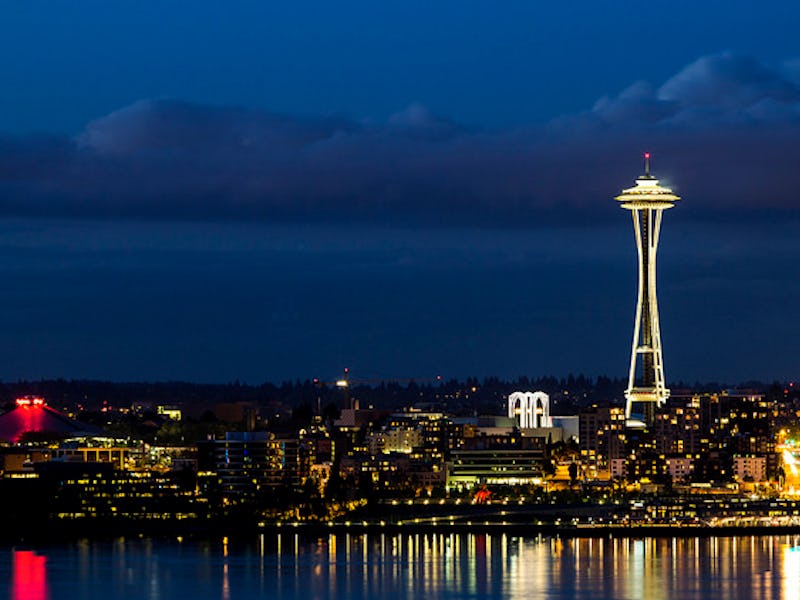Seattle's Reaction to a Certain, Immense Earthquake: Meh
You can't rattle a city that will eventually be shaken to rubble.

So, uh, Seattle. Swell town. Lots of great beer, lots of great music, no good beaches to speak of, but plenty of hipsters with mountain-climbing calves and a really picturesque volcano hovering in the distance. Visit (or escape) while you can, because on Monday the New Yorker articulated the certain doom awaiting the Pacific Northwest. Writer Kathryn Schulz’s article, “The Really Big One,” warned of the serious potential for a 9-point-something disastermaker earthquake to rip Cascadia in half like a phone book, like, any time now.
The danger is caused by a fault line stretching from northern California to Vancouver (B.C.) called the Cascadia subduction zone, a massive ridge whose tectonic plates are jammed together instead of sliding on top of one another. If the plates shift, such former Nirvana tour stops such as Seattle, Portland, Eugene, and Olympia are flat-out screwed. The normally earthquake-free region’s infrastructures are woefully unprepared to face a natural disaster of that magnitude. But you can’t really blame them: Nobody even knew the Cascadia subduction zone existed half a century ago.
To make matters worse, the odds of a quake obliterating the region between now and 2065 are one in, um, three. Schulz writes that the possibility of a really big earthquake is one-in-ten. Some 13,000 people could die, with another 27,000 injured, and a million homes could be destroyed.
What will this horrific firestorm of earthly trembling look like? She writes:
When the next very big earthquake hits, the northwest edge of the continent, from California to Canada and the continental shelf to the Cascades, will drop by as much as six feet and rebound thirty to a hundred feet to the west—losing, within minutes, all the elevation and compression it has gained over centuries. Some of that shift will take place beneath the ocean, displacing a colossal quantity of seawater. The water will surge upward into a huge hill, then promptly collapse. One side will rush west, toward Japan. The other side will rush east, in a seven-hundred-mile liquid wall that will reach the Northwest coast, on average, fifteen minutes after the earthquake begins. By the time the shaking has ceased and the tsunami has receded, the region will be unrecognizable. Kenneth Murphy, who directs FEMA’s Region X, the division responsible for Oregon, Washington, Idaho, and Alaska, says, “Our operating assumption is that everything west of Interstate 5 will be toast.”
Basically, a lost chapter of Genesis as directed by Michael Bay. So how are the fair people in Earthquake Alley taking the news? Like people who know climate change is also rapidly destroying our planet but still go on acting as normal because they think it’s inevitable. There’s not a lot of what you might describe as “urgency” here.
Kipp Robertson on MyNorthwest.com jokes, “are Northwesterners really in as much danger as someone writing for an East Coast publication makes it seem, or are the people of New York just irritated that the West Coast is a better place to live?” And Curbed Seattle just kind of throws in the towel, saying: “What can you do? Well, if you suddenly feel a bit wobbly and your dog starts barking, try to find shelter in your home. Other than that, we’ll see you on the other side, which will apparently be shifted westward by about a hundred feet.”
Twitter also shrugged. Because the worst Twitter is super-serious Twitter, even when you’re talking about cataclysm:
Laugh now and order another round of Rainiers, but this is the worst news for the Pacific Northwest since Greg Oden’s knee. Without serious change and actual precautions taken, we may have one of the worst disasters in American history on our hands. The only one projected to be worse was the disaster Soundgarden forecasted in the mid-‘90s: